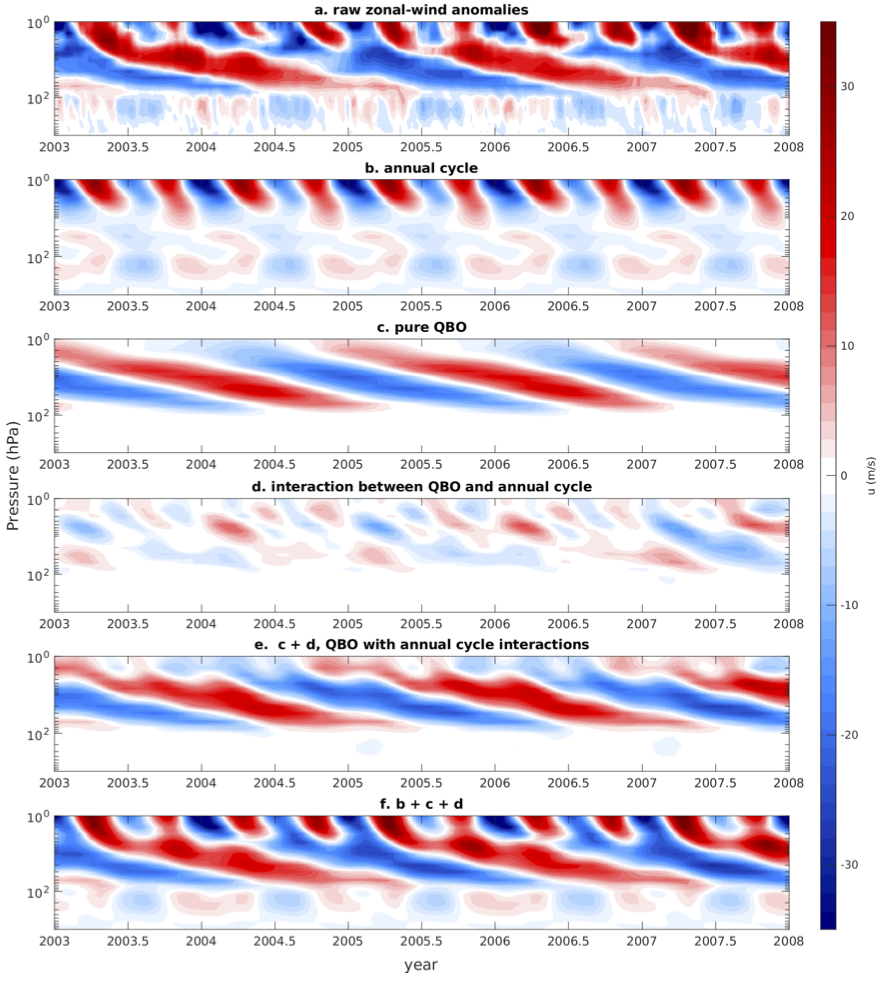The life and times of a trace gas in the stratosphere
Published:
Please see our paper exploring the role of “isentropic mixing” on the transport of trace gases through the stratosphere, just submitted to the Journal of Geophysical Research: Atmospheres. 
This study, led by Marianna Linz explores the processes that transport ozone, water vapor, and other important trace gases through the stratosphere. Using an idealized tracer, the “age-of-air”, we develop tools to diagnose the relative roles of the mean overturning circulation vs. the large scale mixing of air by breaking eddies in transporting trace gases. The age-of-air measures the time air has spent in the stratosphere, and as discussed in the paper, can be estimated from observations of nitrous oxide and carbon dioxide. The study contrasts integrations with a very simple GCM with simulations of a top shelf climate model, the Whole Atmosphere Community Climate Model, or WACCM, to improve our fundemental understanding of stratospheric transport and provide quantitative estimates of transport in our atmosphere. Co-authors include Alan Plumb and my former student, Aman Gupta.
Key Points
- A new metric for adiabatic mixing in the stratosphere is developed from the age of air tracer
- We examine hemispheric asymmetry and discuss the slow time evolution of the flow
- We calculate this metric to perform a preliminary comparison between models and satellite data




